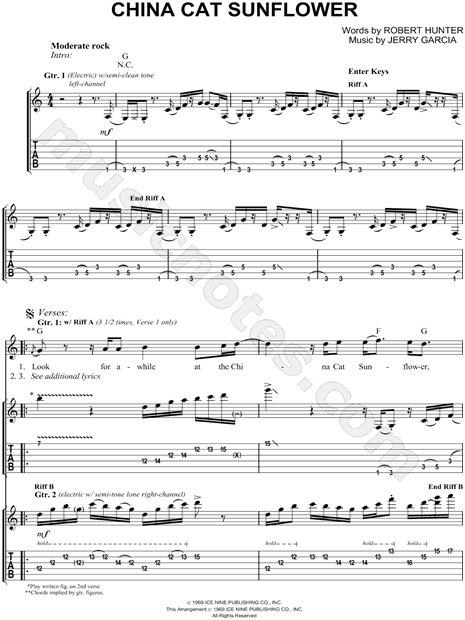

And, while the entire thing fits comfortably within G mixolydian, there is a pentatonic feel to the riff that corresponds to G major pentatonic over the G and F major pentatonic over the F.

You can see on the D string how the riff phrases bounce between the G (the 5s) and F notes (the 3s), and how the last two beats in particular focus on the F. As always, you can play many variations, but the gist is: G G F G |G G F F The riff correlates to the chord change, with part of it tracking a G chord and part of it tracking an F. In fact, the initial groove and main verse is based around a mixolydian G – F chord change, albeit Jerry only plays the actual chords when he starts singing. You can tell right away because the song’s initial riff on the low end establishes a G major focus but has the flattened 7th degree, F, instead of F#. Lead in mixolydian except over the F – C, where you switch to aeolian.Ĭhina Cat is in G major, mixolydian mode. I Know You Rider is a D mixolydian I – bVII – IV – I (D C G D) progression, with an F – C counterpoint borrowed from D minor. There are a couple of different ways that different versions get back to G, one of which is chromatic and one of which is harmonic. The E mixolydian part mirrors what we did in G mixolydian, including a switch to E major before returning to G. In the middle the key changes from G major to E mixolydian via that D chord, which pushes up to E as a bVII chord to a I. The main groove in China Cat is based around a mixolydian G – F chord vamp, and then the move to D major over a V chord, D, then back to G mixolydian. So G mixolydian -> G major -> D mixolydian is how it happens seamlessly.

Tldr: China Cat is primarily in G mixolydian, and I Know You Rider is in D mixolydian they are melded together because China Cat has a part that goes to G major, and G major is the parent scale of D mixolydian.


 0 kommentar(er)
0 kommentar(er)
